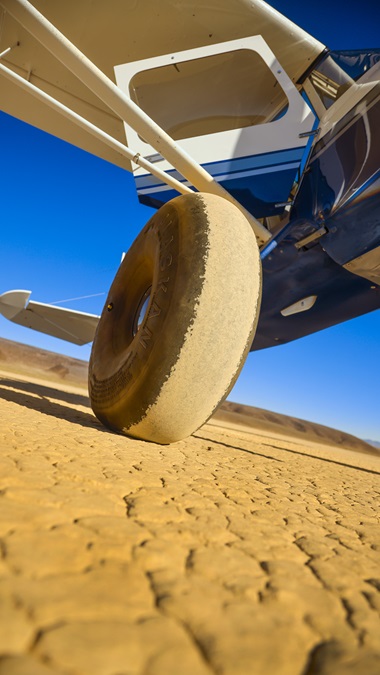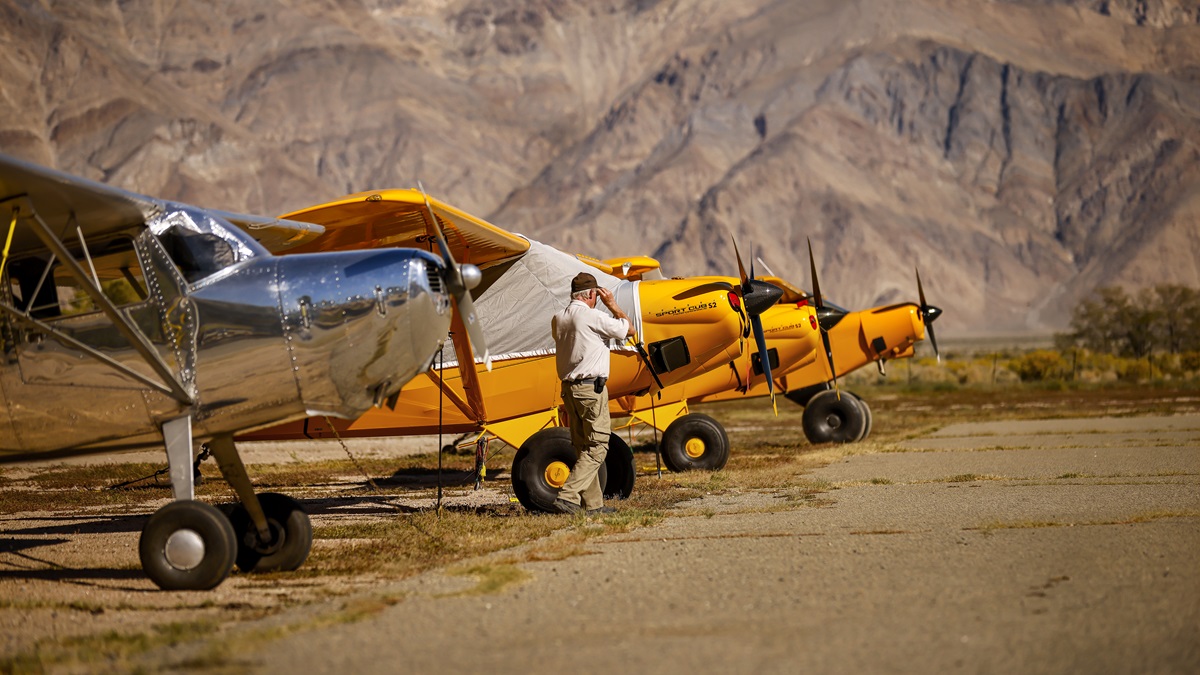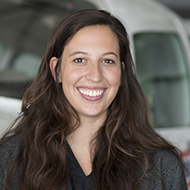Once upon a time in the West
A California fairy tale
Lone Pine, California
The air is chalk dry and the heat is intense for mid-October, but even though it is only a stone’s throw from Death Valley, the temperature in Lone Pine is thankfully in the 80s.

Lone Pine is the gateway to Mount Whitney and the Alabama Hills. It’s also a favorite spot for the film industry—movies like Gladiator, Iron Man, and The Lone Ranger were filmed here—and is home to the Museum of Western Film History.
The old Tunnel Air Camp Hangar at Lone Pine Airport (O26) was once home to a backcountry training and charter business. Next to the hangar is a green and white house-turned-terminal building. Volunteers are checking visitors in for the third annual Lone Pine Backcountry Fly In. They are collecting tie-down fees, and the ramp is almost full. Pilots hang out in the shadow of the terminal.




Fly-in organizer Dustin Mosher waves from across the ramp and walks over. Mosher is a flight simulator engineer for Virgin Galactic, and he lives and breathes aviation. He also plays the fiddle exceedingly well. It’s time for the adventure to begin, he says—we’re going on an ice cream run to Independence.
“The country where you may have sight and touch of that which is written lies between the high Sierras south from Yosemite—east and south over a very great assemblage of broken ranges beyond Death Valley, and on illimitably into the Mojave Desert.” —Mary Hunter Austin, The Land of Little Rain
We hop into Mosher’s Cessna 120 and, with a group of seven airplanes, head north. The flight to Independence (2O7) is just a few minutes, and the ramp at the sleepy airport looks dressed up with its row of colorful guests.
The Eastern Sierra Ice Cream Company’s creatively named flavors (Second Summer, Winter is Coming) are homemade. Mosher assures us first-timers can’t go wrong, and he’s right. Belly full after a scoop of honey lavender and lemon blueberry, I walk back to the fleet. Mosher has extensive knowledge of just about every airstrip that has ever existed in the state, and on the way south he points out the site of one of the darkest times in U.S. history: the Manzanar War Relocation Center, where more than 10,000 individuals of Japanese descent were interned during World War II. There’s hardly anything there now, and without him pointing it out, we’d miss the few buildings across Highway 395 from the old runway.
We’re nearing sunset but loathe to land, so Mosher takes us on a weaving tour of the Alabama Hills before conceding to the turning Earth and landing before dark.
To get ready for the next day’s big event—the fly-outs—we go to the terminal for briefings on routes and expected difficulty. Pilots are encouraged to self-select into one of the four groups that best fits their skills and aircraft type, and after a shuffle, the groups are naturally evenly divided.








Mosher hands each pilot in our flight of eight a briefing sheet and unfolds his chart. We huddle around like hungry treasure hunters looking at a map to El Dorado. Our group will fly east over Death Valley and through Rainbow Canyon (aka Star Wars Canyon) to Nevada’s Bonnie Claire dry lakebed. Then we’ll head to the Gold Point ghost town before visiting Goldfield, Nevada.
“Here you find the hot sink of Death Valley, or high rolling districts where the air has always a tang of frost. Here are the long heavy winds and breathless calms on the tilted mesas where dust devils dance, whirling up into a wide, pale sky. Here you have no rain when all the earth cries for it, or quick downpours called cloud-bursts for violence. A land of lost rivers, with little in it to love; yet a land that once visited must be come back to inevitably. If it were not so there would be little told of it.”—Mary Hunter Austin
It’s a clear, cool, beautiful morning. For the 40 or so aircraft participating in today’s fly-outs, the departure is surprisingly smooth. The four groups depart slowest to fastest, with a plan to all return around the same time. We take a right downwind, paralleling the mountains. The Owens River spreads below us, a shallow mirror of the jagged Sierras.
Our routing choice is part scenic and part practical—even the shorter mountains here are mighty tall. Mosher flies here so often that he navigates entirely from memory; we’ve passed over no towns and hardly any roads. We sneak through Star Wars Canyon and into Panamint Valley where inhospitable terrain stretches in every direction. No one says it out loud, but we all know it: This really would be a bad place to wreck.
A fly-in like this with a fly-out of this scale needs safety-minded people—in practice and not just in words—to be sustainable. On flights like this, you must build in extra layers of safety. Like most pilots on today’s adventure, Mosher flies with a personal locator beacon. We have several gallons of water on board, and as much fuel as the weight and balance will allow. The other groups know our expected routes, and, perhaps most important, none of us is flying alone.
The Bonnie Claire lakebed shines like a blister in the sun, the playa so featureless and uniform that it’s nearly impossible to judge its size with eyes alone. The flat lighting of the lakebed reminds me of a glassy water landing—if you weren’t paying attention, it’d be easy to muck up the touchdown. Wheels create little dust clouds on contact, and we marvel at the fun of being in the middle of nowhere.








“If you keep going east, you’re in Area 51,” Mosher says, reminding us that we are now in Nevada. After sufficient photos and chit chat, he briefs us on our next stop, Gold Point.
While this uncharted gravel strip that we’re flying to is long, he says, it is one way in, one way out, and at a certain point there is no safe go-around because of the rising terrain. And there’s probably going to be brush on it. Oh, and it sort of rolls. Mosher handles Gold Point with no issue. We touch down and he balances us upright, keeping that tail away from brush on the gravel strip, and coping with the rolling, upsloping, narrow runway with ease. It is impossible not to be impressed.
Once the fleet is parked on the narrow strip, avoiding cacti and Joshua trees, we wander into the ghost town. Old West cabins line the dirt road. The only sign of life is at the saloon at the top of the hill, and if Gold Point’s known for anything, it’s this. The bar, which has nothing for sale but accepts donations, is adorned with knick-knacks of every type and would be a perfect place for a game of I Spy.
From the top of the field looking down the runway at Gold Point, it’s even more sloped and bumpy than it felt on the way in. In the distance, we see another small mountain range, which Mosher says is more than 50 miles away. The scale of the west is immense.
Even though it’s barely been perceptible, we’ve been landing at higher than 5,000 feet and cruising at a density altitude even higher than that. But so far, it has not felt like we’re in an underpowered airplane, which is how anyone would probably class a Cessna 120 flying around the high desert with two passengers and almost full fuel.
At Goldfield we park by the bones of an old hangar, nod to the burros in the adjacent field, and try to look friendly as a car creeps by. We wave, and the passengers in the car wave back.
“It’s really when they don’t wave back that you have to be worried,” Mosher says as we walk to town. Moments later, the driver of a pickup truck pulls alongside and offers a ride. We gratefully accept, pile into the truck, and bounce along for about a mile. It’s amazing how quickly aviation brings people together, and we all laugh and smile on the way into town.
After a quick tour of the time-capsule town, we head back to the airport, and say goodbye to three of our eight airplanes.
Now we make the long trek back across the border and home to Lone Pine. We cross over lithium mines and their milky jade pools, then over Death Valley and Panamint Valley once more, finding lift along the ridges to help boost us over on this high, hot day.
We make it back to the Owens Valley and its golden light, and Mosher checks the weather and briefs the flight of five on our approach. Over the CTAF we hear “Lone Pine Traffic, two hundred head of black angus on Runway One-Three, Lone Pine.”
“Well, I guess we won’t be landing right now,” Mosher quips as we approach the field and see a black mass in the center of the strip. A herd of cattle is being ushered across the runway, down the taxiway, and to pasture. Our tents, which are 10 feet away from the pasture gate, are unscathed thanks to the skilled ranchers.
“For all the toll the desert takes of a man it gives compensations, deep breaths, deep sleep, and the communion of the stars.” —Mary Hunter Austin
As the sun sets, lights go on in the hangar and musicians start to play. We’re in a California fairy tale, and a group of us head away from the floodlights to watch the night sky. The stars are so bright they define the mountain peaks. We can see the Milky Way, that gorgeous tendril on the edge of our spiral galaxy, and watch more shooting stars than we can wish on. To the south, lightning flashes in the darkness.
“Everyone here is good people, and they’re all broke on aviation,” says Mosher. “They all love it and want to share it. We all spend all the time we can flying.”
I wake up before the sun has fully slipped into the valley. Mount Whitney catches first light and stands out an electric peony pink framed by the soft blue surrounding mountains. I grab some coffee and watch the light change, and everyone seems to speak barely above a whisper, as if our voices would break this beautiful daybreak spell. It didn’t look like much when we showed up. Just a humble little airport with a nice dirt strip, some history, and some good folks. But the love that’s been poured into it by the aviation community, and especially the fly in’s founders, has transformed this high desert field into a haven. Lone Pine’s future is bright, and I’m glad I was here.




